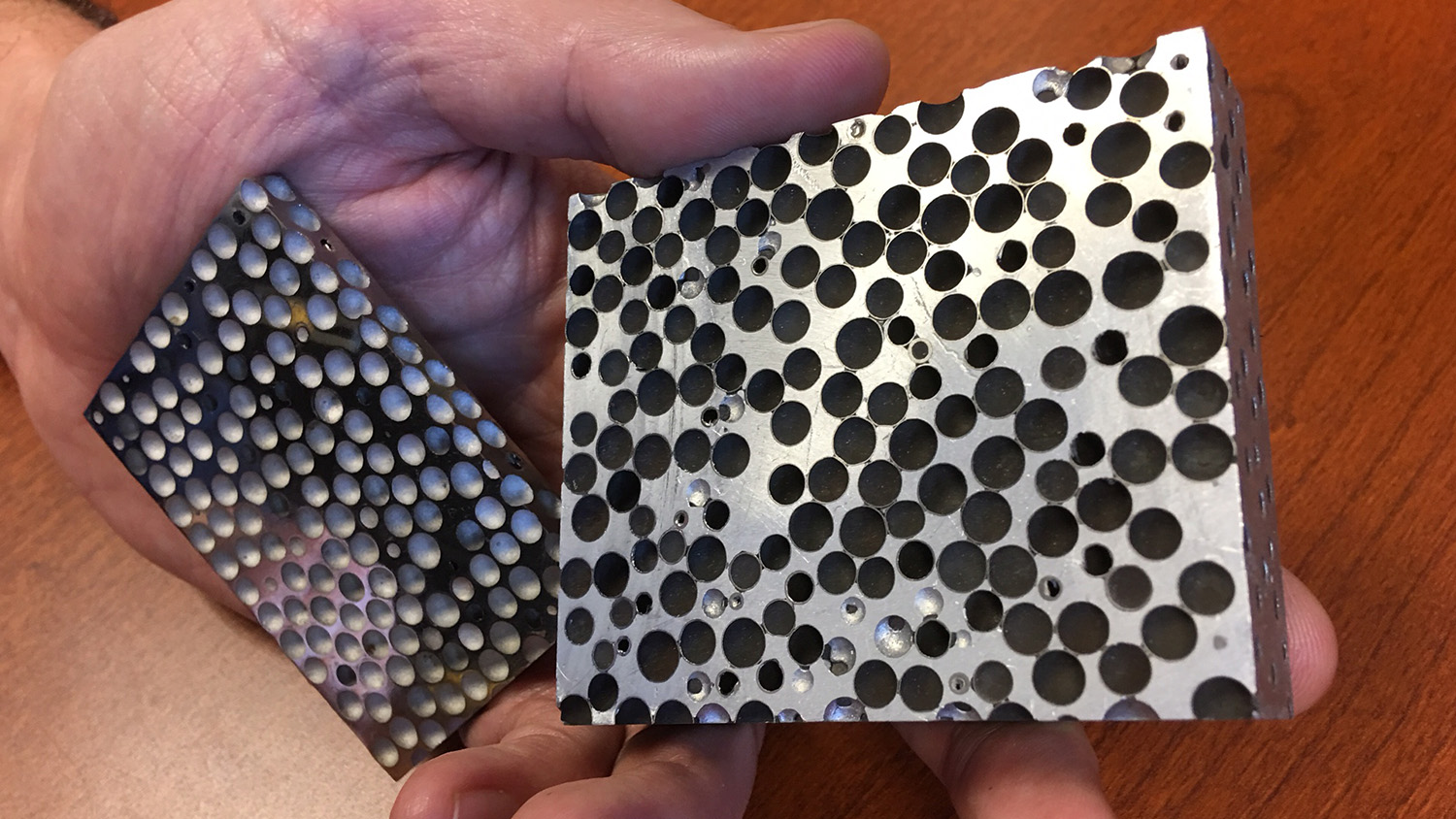When mechanical and aerospace engineering professor Afsaneh Rabiei began developing composite metal foam, she looked to transform the transportation and military industries. Twenty years later, her product has the potential to save lives, and she wants to see it integrated in as many industries as possible.
Composite metal foam (CMF) consists of metallic bubbles filled with air. These bubbles are then embedded within a metal matrix, like steel, aluminum or other metallic alloys. Because the finished product includes pockets of air, threats like heat, fire, impact, radiation and even blast and ballistics become weaker and less harmful.
“I’m not in this work to become rich, buy a yacht and retire,” Rabiei said. “I’m in it because I believe that this can change the world for a better and safer place, and this product can save people the same way that bubble wrap saves glass and fragile items in transportation.”
She started the company Advanced Materials Manufacturing (AMM) to bring CMF to the marketplace. The material has numerous applications, including in transportation, aerospace, military, tools and human health. And because its structure is up to 70% air, CMF is lighter, more efficient and more environmentally friendly than solid metals. This fall, Advanced Materials Manufacturing was selected as a Deep Tech Pioneer by Hello Tomorrow, a company based in France that offers resources to startups committed to solving global challenges through new technology.
Through AMM, Rabiei hopes to license CMF for various applications or to manufacture material for companies to use in their products and structures.
This can change the world for a better and safer place.
“We have a lot of nets in the water,” Rabiei said. “After almost two decades of research perfecting the properties of CMF at NC State, we are now working towards scaling it up in AMM and looking into its application and retrofitting the technology into a variety of structures. This involves welding, assembling, manufacturing larger products and negotiating with end users for retrofitting the technology into their products, licensing one CMF application, bringing that money back to the company to develop other applications, and gradually taking all of them to the finish line.”
NC State’s partnerships have provided critical research opportunities to develop CMF. Through a project funded by the U.S. Joint Aircraft Survivability Program (JASP) , Rabiei and her team built armor from CMF to protect against various threats such as ballistic, blast and fragments. A project with the Department of Transportation allowed them to create storage containers to transport hazardous materials. And a NASA-funded project examined how CMF can be used in constructing better airplane wings.
“Through many years of our research, CMF’s benefits have been proven through civilian, academic, and military testing,” Rabiei said. “The most exciting thing is to see it grow and start saving lives and change the world into a better and safer place for our future generations.”
Her ultimate goal is for composite metal foam to become a vital material in society.
“My vision is that years from now this would be in every household,” Rabiei said. “I just wish I’ll be alive to see that. It’s like sending your kid out and wishing to see them growing into a successful person.”



